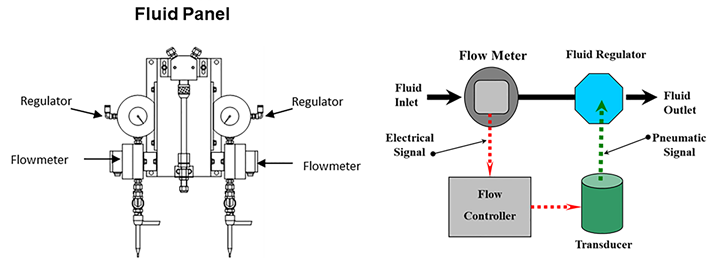Pressure and Flow Control in Spray Guns and Rotary Atomizers
Tighter controls of paint flow and pressure may help finishers improve efficiency and profits.
Q. How do you control the flow to a spray gun or a rotary atomizer? Does flow control the pressure or vice versa?
A. Without using math and getting into specifics, it may be easier to address the second part of the question first. Flow is the volume dispensed to an end point, such as a gun or a bucket, and how long it takes for a given volume to get to that end point — in this case, to spray from a gun or fill a bucket. Pressure affects how quickly liquid gets to an end point or, in the coatings industry, what force is required to get a liquid to the end point, such as the gun or bucket. In low-pressure systems, flow is the delivery of volume, as the low-pressure system uses external forces to atomize liquid particles. In airless or AA systems, flow is sufficient (high) pressure to cause atomization, plus the correct volume.

Flow and pressure controls are critical.
In a simple spray system, there is a fluid regulator that controls the pressure to the applicator. By having sufficient pressure/volume to deliver the liquid, the fluid regulator can control the flow within a range in conjunction with the applicator fluid nozzle, hoses and fittings.
To clearly understand if controlling flow pressure can help improve your bottom line or have an impact on your system, you need to ask yourself some very important questions. How much do you spend on coatings? Is a little too much paint on a product too costly? Does too much coating cause issues? The simple answer is, if you control the fluid, you can control your costs.
What’s right for your operation depends on your reaction to the questions of cost and performance. If these are major concerns, then you may need fluid control, or closed loop fluid control. Closed loop fluid control may be accomplished by using metered pumps and counting strokes or gear pumps that provide a given number of ccs per revolution. This enables you to set the revolutions and get the specified volume. Note that this can be influenced by elevation changes.
Closed loop fluid control monitors the flow and maintains pressure regardless of the application movement. These systems may check the flow 50 times per second. The readings can open flow valves. That’s right — flow valves that regulate flow without changing the pressure. This constant feedback loop has the supply system reacting to meet the needs of the applicator. If, at any point, the system fails to meet the set parameters, the system shuts down and alarms instead of making rejects.
When the correct thickness of coating is needed, and everything is warrantied and critical, the flow and pressure controls are important. Without them, you may be able to get it right, but you may also risk cost overruns and coating failure. With good controls and/or closed loop fluid control, you really will be in control.
Related Content
-
Masking Solutions Provider CFS Dramatically Expands Capabilities and Capacity
Custom Fabrication & Supplies (CFS) completed a new plant expansion packing 10 times the capacity into twice the space. It dramatically enhances the supplier’s custom capabilities to provide extremely precise and cost-effective masking solutions.
-
Intumescent Coating Provides Up to 3 Hours of Fire Protection
PPG Steelguard 951 coating is designed to provide protection against fire and corrosion.
-
Robots, AI and Superb BMW Surfaces
There isn’t an automotive paint shop in the world that doesn’t have post-paint inspection and defect processing. But BMW is doing this with levels of technology at a plant in Germany that exceed all other paint shops in the world.










.jpg;maxWidth=300;quality=90)




